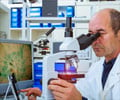By mapping the anatomy of a membrane protein for the first time in Australia, researchers at Sydney's Centenary Institute have taken a major step towards developing new therapies.
Researchers at Sydney's Centenary Institute have taken a major step towards developing new therapies by becoming the first team to map the anatomy of membrane proteins.
This breakthrough discovery may change the way we discover new drugs on its head and reduce the development time for new treatments."These membrane proteins are the target for 70% of all therapeutic drugs so an increased understanding of them is vital for future drug discoveries," Nature quoted Professor Mathew Vadas, Centenary Institute Executive Director, as saying.
According to Dr Mika Jormakka and his colleagues at UNSW, the knowledge about membrane protein structures may aid in the development of better treatments for diseases like cancer.
"The best way to imagine the way we currently discover new drugs is to think of a lock and key. The lock is the membrane protein that causes the body to respond to treatment and the key is the drug," explained Jormakka.
He added: "Up until recently we have never known what the lock looked like so we have to build thousands of keys (drugs) until we stumble upon one that fits. By mapping membrane proteins we are creating a map of the locks - this should make it much easier to design a key that fits."
"It is an exciting time to be working in structural biology as we are still very much at the start of the story. There are only around 70 membrane proteins out of a potential 10,000 that have ever been mapped."
Advertisement
The study is publishing this month in the prestigious international journal, Nature Structural and Molecular Biology.
Advertisement
RAS/L












